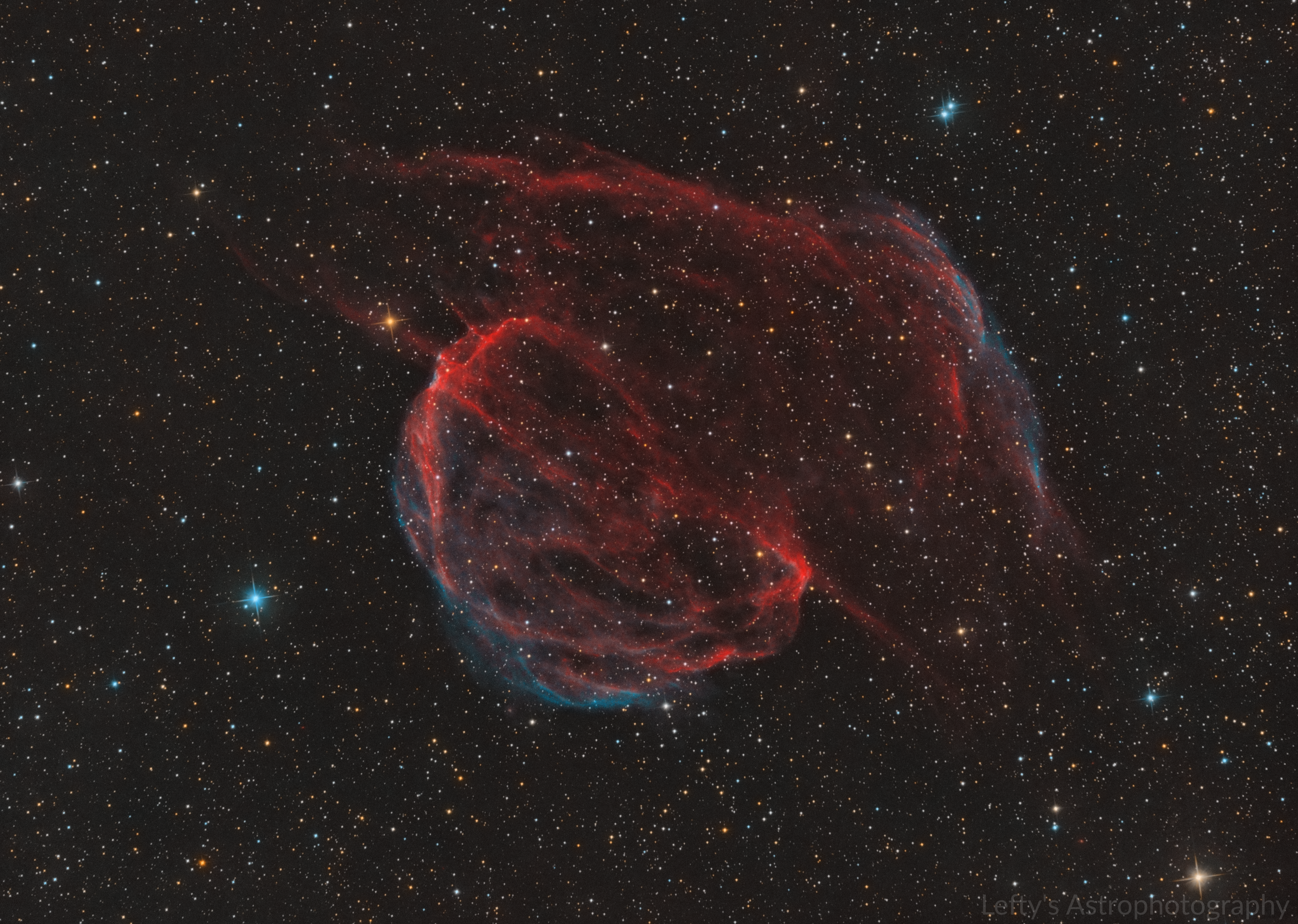This is one of my longer projects, with 84 hours of long exposure time over 2 seasons going into this photo. Sh2-224 is an extremely faint nebula, and this is what a single 10 minute long exposure (through a Ha narrowband filter) of it looks like. I ended up getting ~83 hours of narrowband exposures like this, plus about an hour of RGB images for the stars. Because it's so faint, if the moon was up at all I did not shoot it, which cut the number of clear nights I could reasonably image it in half. The nebula itself is false color (although the HOO palette I used is fairly close to natural color), the stars were taken with RGB filters and are true color. With this project I finally managed to learn how to do some starless processing techniques for combining the stars+nebula
Captured over 27 nights between February 2021 and April 2022, from my Bortle 6 driveway
Places where I host my other images:
-
TPO 6" F/4 Imaging Newtonian
-
Orion Sirius EQ-G
-
ZWO ASI1600MM-Pro
-
Skywatcher Quattro Coma Corrector
-
ZWO EFW 8x1.25"/31mm
-
Astronomik LRGB+CLS Filters- 31mm
-
Astrodon 31mm Ha 5nm, Oiii 3nm, Sii 5nm
-
Agena 50mm Deluxe Straight-Through Guide Scope
-
ZWO ASI-120mc for guiding
-
Moonlite Autofocuser
Acquisition: 83 hours 52 minutes (Camera at Unity Gain, -20°C)
-
Ha - 266x600"
-
Oiii - 231x600"
-
Red- 14x90"
-
Green- 14x90"
-
Blue- 14x90"
-
Darks- 30
-
Flats- 30 per filter
Capture Software:
- Captured using N.I.N.A. and PHD2 for guiding and dithering.
-
BatchPreProcessing
-
SubframeSelector
-
StarAlignment
-
ImageIntegration
-
DrizzleIntegration (2x, Var β=1.5)
Narrowband processing:
-
DynamicCrop
-
DynamicBackgroundExtractions
-
NoiseXTerminator
-
StarXterminator to completely remove stars for starless processing
to be later replaced by RGB stars. doing this allows the nebula to be stretched without worrying about blowing out stars
- HistogramTransformations to stretch nonlinear
RGB Linear Processing:
-
DynamicCrop
-
DynamicBackgroundExtractions
-
ChannelCombination to combine monochrome R, G, and B frames into color image
-
PhotometricColorCalibration
-
Slight SCNR Green
-
HSV Repair
super useful for putting color back into blown out star cores
- StarXterminator to generate stars only image
basically just getting rid of the background
- ArcsinhStretch + Histogram transformation to stretch nonlinear
Combining Channels:
- ChannelCombination to combine stretched Ha and Oiii images into color image
Ha mapped to red channel, Oiii to Green and Blue
-
HistogramTransformation to re-linearize HOO and RGB stars images
-
PixelMath to add RGB stars only image to starless HOO image
HOO + Stars the math was simple
- HistogramTransformation to bring HOO+Stars pic back to nonlinear state
Nonlinear:
-
Shitloads of CurveTransformations to adjust lightness, saturation, contrast, hues, etc. with various masks
-
ColorSaturation to selective saturate/desaturate specific hues
-
More curves
-
Slight SCNR Green
-
NoiseXterminator
-
LRGBCombination with extracted L as luminance, used for chrominance noise reduction
-
even more curves
-
color saturation again
-
SCNR to remove some green star color
-
EZ star reduction
-
NoiseGenerator to add noise into reduced star areas
-
LocalHistogramEqualization
-
guess what baby more curves!
-
Extract L --> LRGBCombination again with mask for larger scale background chrominance noise reduction
-
Resample to 70%
-
Annotation
